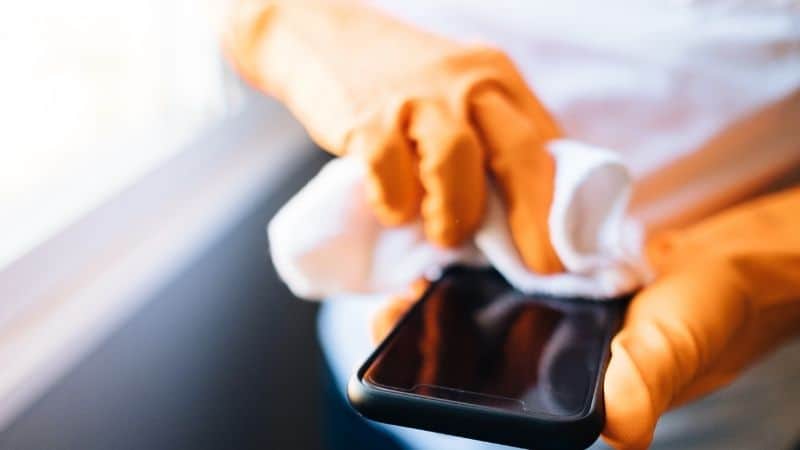How To Clean An iPhone Speaker

Table of Contents
We have all been in those situations where you notice the audio quality of our iPhone speaker has deteriorated. Maybe you are experiencing a rattling noise, one side of the speaker not being as loud, or your speaker just sounds faded, like it's underwater.
This likely means your speaker is blocked with dirt, so long as your speakers still seem to have some noise playing out of them. If your iPhone is completely silent, you may need to consider that your speaker might be broken rather than damaged by dirt.
Prime Day is finally here! Find all the biggest tech and PC deals below.
- Sapphire 11348-03-20G Pulse AMD Radeon™ RX 9070 XT Was $779 Now $739
- AMD Ryzen 7 7800X3D 8-Core, 16-Thread Desktop Processor Was $449 Now $341
- ASUS RTX™ 5060 OC Edition Graphics Card Was $379 Now $339
- LG 77-Inch Class OLED evo AI 4K C5 Series Smart TV Was $3,696 Now $2,796
- Intel® Core™ i7-14700K New Gaming Desktop Was $320.99 Now $274
- Lexar 2TB NM1090 w/HeatSink SSD PCIe Gen5x4 NVMe M.2 Was $281.97 Now $214.98
- Apple Watch Series 10 GPS + Cellular 42mm case Smartwatch Was $499.99 Now $379.99
- ASUS ROG Strix G16 (2025) 16" FHD, RTX 5060 gaming laptop Was $1,499.99 Now $1,274.99
- Apple iPad mini (A17 Pro): Apple Intelligence Was $499.99 Now $379.99
*Prices and savings subject to change. Click through to get the current prices.
Here are a few ways to clean your iPhone speaker out for different levels of dirt. Although do note that if your phone is still under warranty, and you are experiencing issues, contact Apple for a potential repair.
Use Canned Air
We've all tried to clean out small electrical components, like an iPhone speaker, by blowing on them. Unfortunately the shape of your mouth as well as the capacity of your lungs can;t really create enough propellation to displace dirt, no matter how hard you blow.
Canned Air can solve this with their long and thin tube which helps create an accurate and powerful stream of air to clean out these smaller electrical components. It is easily bought online for a small price.
Step
Turn Your iPhone So That The Speaker Holes Are Facing You
To clean out your iPhone speaker with Canned Air simply turn your iPhone so that the speaker holes are facing you.
Step
Place The End Of The Tube Near The Speakers Then Blow Air On It
Attach the long tube to the can of air and test if there is air coming out. Place the end of this tube initially a good few inches from the speaker hole and move it closer and closer as you start to blow air out in small spurts.
If the dirt is not loose enough to be blown out, you may want to consider one of the other more direct steps.
Use A Toothbrush
One great tool that you may have lying around in your home already, is to use the bristles of a toothbrush. This can be effective at releasing some harder dirt that Canned Air has failed to dislodge.
Of course, for this step, you will require a toothbrush – we wouldn't recommend using the one you are currently using to clean your teeth.
Additionally, consider removing your phone case if you have one in order to get a better purchase on the dirt with the bristles.
Step
Brush The Speakers
All you need to do, which is much easier with the more firm bristles of a fresh toothbrush, is to brush the speaker holes with the same motion you would brush your teeth.
Try not to push too hard, although if the dirt fails to release initially try with a little more force, but you don't want to damage your speakers further.
Use A Toothpick
A Toothpick can be the one of the more effective ways to remove dirt from your speaker, but it requires caution to not damage the internal electrical components. The same effect can be achieved by using something similarly sharp and pointy.
Step
Dislodge The Dirt
Using the sharp end of the toothpick, attempt to dislodge the dirt by entering the toothpick at an angle so that the dirt falls out naturally with gravity.
Try to dislodge the dirt with this technique rather than applying unnecessary force which could damage the internal workings of the speaker.
Final Thoughts
There are many household items capable of cleaning your iPhone speaker, none of which will cost as much as replacing the speaker itself, so it's worth a try.
If you can still hear audio through your speaker the speaker will work and can be cleaned, if there is no audio coming from the speaker at all it may be irreparably damaged.

